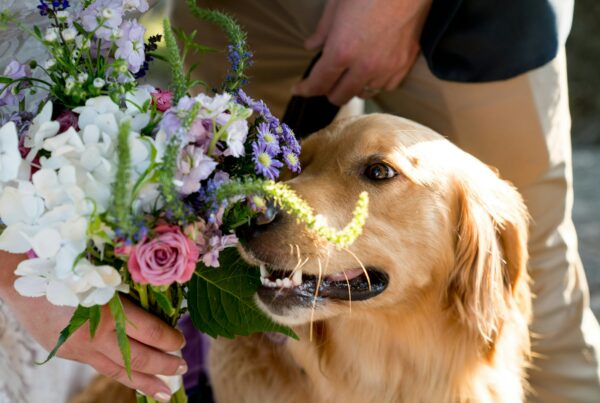Many pet parents agonize over choosing the right type of food. Between bagged kibble, freeze-dried treats and custom human-grade meals, it’s no wonder there is so much confusion. Making your own dog food is a great way to clear up that confusion and ensure your pup has the best and freshest food. Here are some tips to help you get started.
Research Your Dog’s Nutritional Needs
Many pet parents fail to realize that dogs have very different nutritional needs than people — or even compared to other animals. However, there are some similarities that can help guide your food choices.
For example, both people and dogs are classified as omnivores. So, unlike cats, who are obligate carnivores, dogs eat various foods. Generally, food consisting of a mix of meat, vegetables, fruits and grains will meet a dog’s nutritional needs. You’ll need to be more careful if your dog has allergies or special dietary needs.
Pay Attention To Storage Times and Freshness
Just like any food meant for human consumption, homemade pet food has an expiration date. This is often linked to the ingredient with the shortest shelf life. Because you’ll most likely prepare the food in batches for a few days or a week, you’ll need a system to track freshness. A spreadsheet can simplify this once you learn a few skills like how to change date format in excel.
Proper storage is as important as using the freshest food first. Luckily, there are a few ways you can extend the shelf life of foods. For example, foods that require refrigeration might last longer in the freezer. This allows you to make large batches and then freeze them for each day. Freeze drying is another option, but you’ll need to invest in the required equipment.
Use Foods Your Dog Likes To Eat
Even if your pup isn’t a particularly picky eater, he still has some favorites. As long as they are healthy options, these foods should be included in his homemade dog food.
Many dogs enjoy a variety of meats, including chicken, turkey, fish, and beef. Add a few extra items when you do your weekly grocery shopping to find your pup’s favorites. You can often find good deals by buying meat in bulk, making homemade dog food more affordable.
Vegetables are another great addition to homemade dog food. Be sure to choose varieties that are safe for dogs. If you are unsure, a quick call to your vet can usually clear up any confusion. Potatoes, carrots and green beans are usually good choices. Regardless of the types of foods you choose for your pet, they should always be fresh and of high quality.
Always Use Safe Food Handling Practices
When you buy dry kibble in large bags, there is little thought about safe food handling. Part of that is because it barely resembles anything you might consider food. But, hey, that’s why you’re looking to make your own.
On the other hand, homemade food requires careful handling both during preparation and after it is done. A few suggestions to help you keep things safe for your pup include:
- Store ingredients separately — Meat and eggs should never be kept with vegetables or grains.
- Wash your hands — Frequent hand washing, especially after touching raw ingredients, can help minimize contamination.
- Check temperatures — Each type of storage has a designated safe temperature. For example, the refrigerator should be at or below 40 degrees. You’ll also want to cook foods to a temperature that ensures doneness.
Follow Up With Your Veterinarian
Your dog’s regular vet is a powerful ally when it comes to homemade food. A compassionate vet will understand your desire to give your dog the best, highest-quality food. She can advise you about tests to determine vitamin levels to ensure your pup’s food meets nutritional needs. Your vet can also provide suggestions to make the food more balanced and appealing to your dog.
You can make safe, nutritious dog food. Work with your vet to ensure nutritional completeness and always practice safe food handling practices to avoid illness.
Photo credit: https://unsplash.com/photos/QZf_Oaj-3yY
Love our content? Share it with a friend or link it to social media. Like short clips of cute household pets? Training tips? Follow us on instagram @nydognanny or on YouTube at nydognanny. Have some news you needs to get to dog and cat parents stat? Email info@newyorkdognanny.com with your article pitch.




